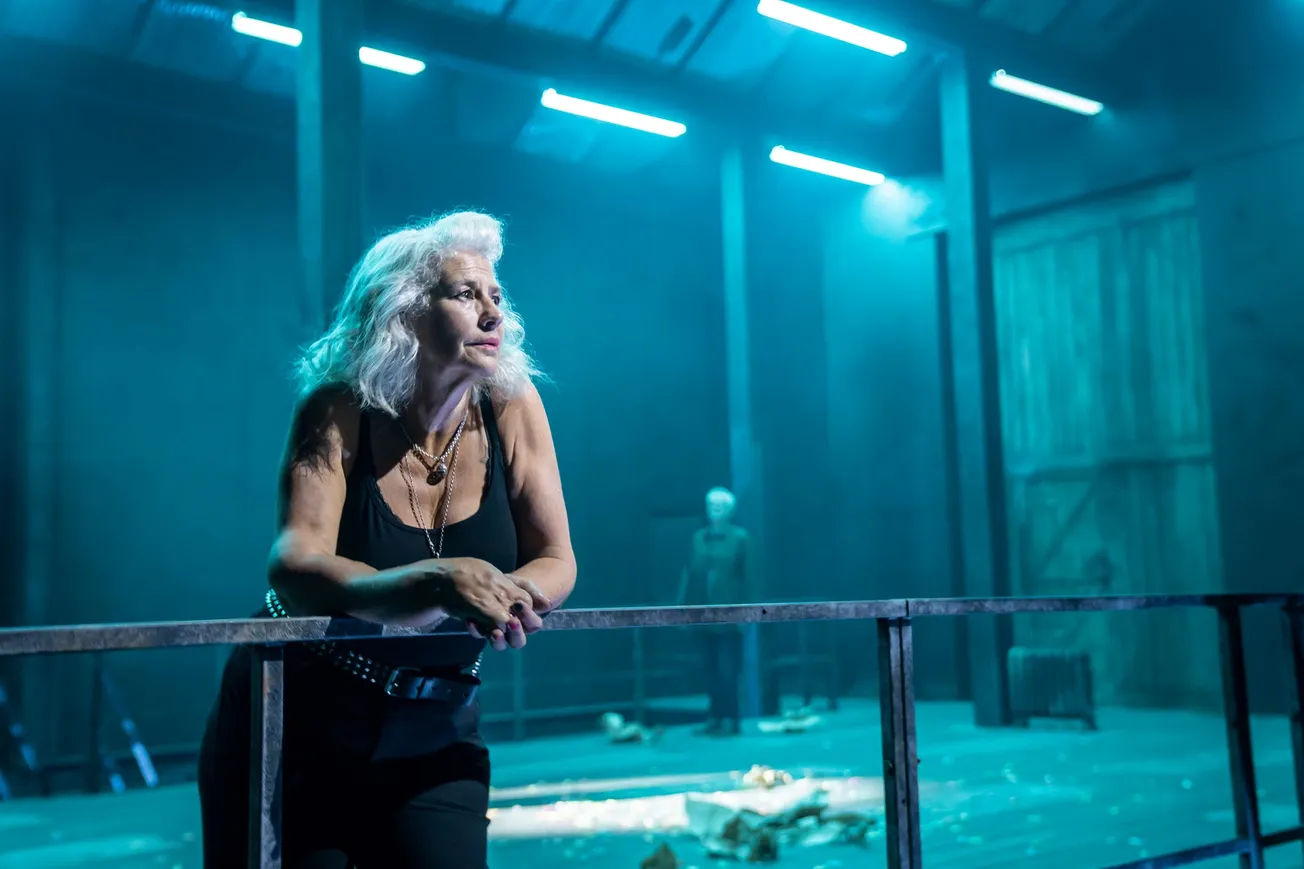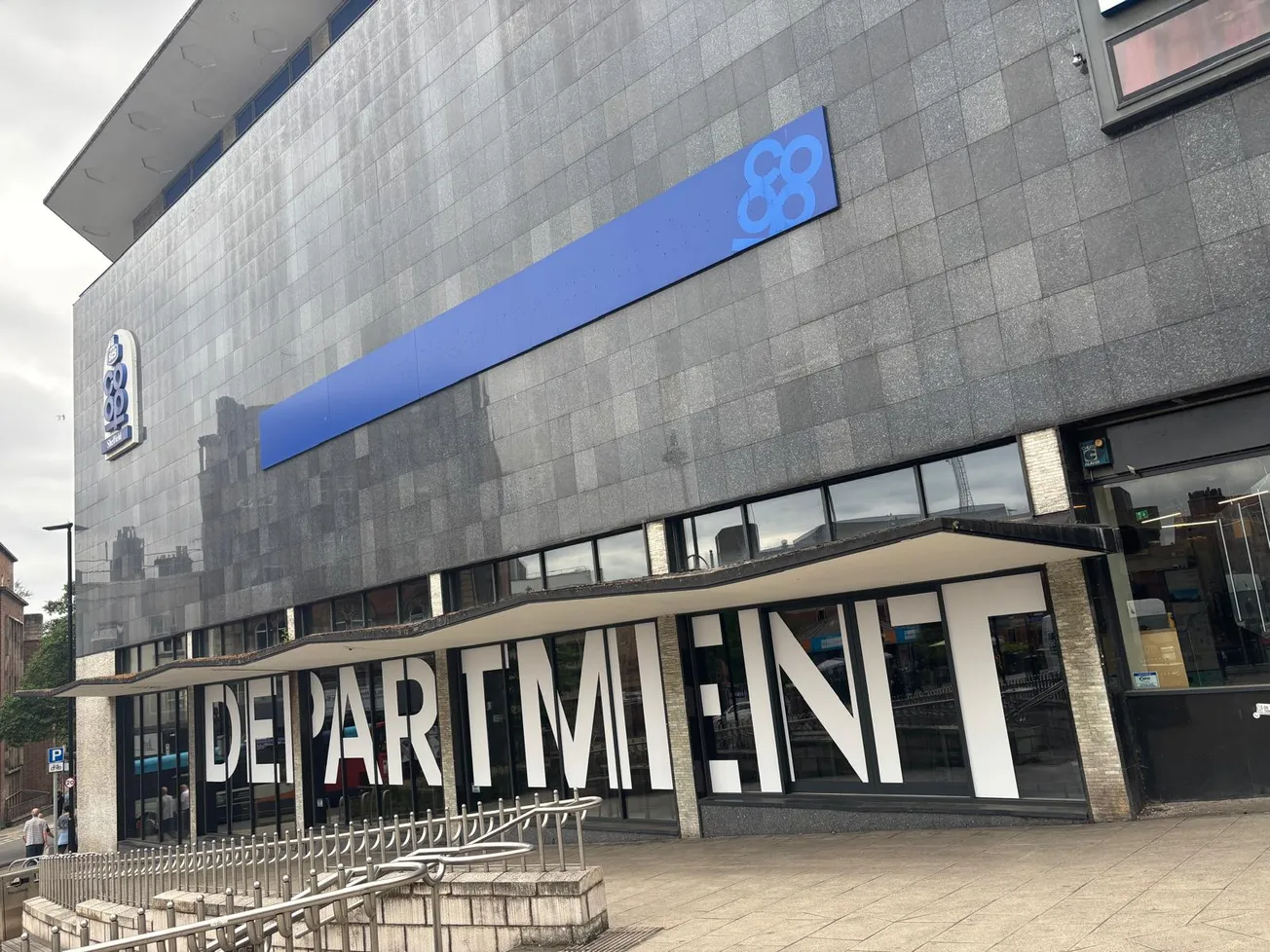“It’s bonkers, completely bonkers,” Denise says, with force and relish.
“Bonkers, good bonkers,” insists Jabez.
These actors are taking time out of rehearsals for Rock/Paper/Scissors, the final production of the season celebrating The Crucible at 50. They’re talking about the prospect of performing in three different plays at the same time. That’s playing the same character on different stages to different audiences in different buildings, putting on different plays with different directors (but one writer), and doing it in real time, all at the same time. A world first, apparently. On two days of the run, they will take on an additional Rubik’s cube of a theatre puzzle to solve, performing all three plays both simultaneously and consecutively, starting at 11.30 in the morning. Have any of the actors done anything like this before?
“Maybe only in an anxiety dream,” says Lucie.

The plays are all written by Sheffield playwright Chris Bush, who penned the similarly ambitious Park Hill musical Standing at the Sky’s Edge in 2019. The action takes place over a few hours on a single day, with the ownership of a historic Sheffield scissor factory cast into doubt. Eddie Spenser, the former owner, has died, and his funeral has taken place, but no will can be found. Should his adopted daughter inherit it — or the manager he apparently promised it to?
The plot thickens when a third contender — Eddie’s sister — arrives to throw her hat into the ring for ownership. The three stages each correspond to a different location within the factory, with each play exploring the same story from a different perspective. The Tribune editor Dan Hayes arranged for three of us to each attend one of the 11.30am performances on Wednesday’s press day. In dicing up the viewing, we hoped to do justice to the alternative viewpoints offered by the play. Interesting discussions seemed likely — lively disagreements virtually guaranteed.
Which would be appropriate, since the plays themselves are structured around disagreements. The disagreements the plays contain don’t simply centre on the ownership of a run-down business but also on a broader topic: disagreements on what Sheffield’s future should look like. At one point in Rock, a character holds a pair of scissors, made in the factory, built to last. She is surprised by the weight of the metal and the quality of the craftsmanship. There is a sudden shift of mood, and for a moment it seems almost as if she’s holding a potent relic, a magical link to the force and energy which once powered the city. But is this just sentimental nonsense? You can buy scissors on Amazon for a few pounds nowadays, and throw them away when they wear out. The building where the scissors are made is half-empty. Surely the most profitable plan is to repurpose it? The company’s heritage can be maintained through a nifty bit of scissor branding.

Dan went to Paper in the Lyceum, where the set represents the office occupied by Omar, the factory manager. Piles of boxes litter the floors and shelves spill over with old document boxes and mismatched files. Half hidden against the back wall the giant blue handles of a pair of scissors can be seen, presumably the remnant of a doomed promotional campaign. Dozens of documents are suspended from the ceiling like mobiles, as if the office is about to be buried in a blizzard of old orders and invoices. Everything speaks of disorder and decline.
Meanwhile, down in the Studio to see Scissors, Liz Ryan, who writes the Yorkshire Theatre Newsletter, found herself in the factory’s cramped, old-fashioned workshop, the realm of four young apprentices. There is a welding machine (something which is key to the action) and scissors in various stages of manufacture hang from a low rack and are scattered over the benches.
Upstairs, the Crucible’s main stage — where Rock will be performed — represents a huge unused industrial space. Grey metal girders support a sloped roof of clear corrugated plastic panels. These are dirty, and there may be a dead pigeon up there, but character after character comments on the striking nature of the grimy light which shines through them. The space becomes resonant with possibilities. In it, one by one, characters reveal their visions for its future and their own. Now and again, creative use of sound and lighting gives the audience the impression that the old building itself is sentient — would you credit it, the building even seems to demonstrate a fondness for music.

Susie, the dead owner’s sister, dominates Rock. An ageing punk clad in black boots, a black leather jacket and blonde hair worn long, she’s a force of nature with a semi-mythical rock-and-roll past. On stage, she seeks to sweep up everyone she meets into her vision of transforming the factory into a pulsating music venue. She’s childless herself, but this will be her gift to future generations, her creation. Although Susie’s easy to root for, it’s implied that she may be a fantasist. She may have had her finger on the pulse of the music business in the past, but does she really understand the young bands of today?
Speaking of fantasies: back in the Lyceum, Omar, the manager, is doing his best to believe he’s already living his dream. 13 years ago he left a career in finance to come to the scissor factory. His aim? To give his life a sense of value and dignity by dedicating it to craftsmanship. The reality of his situation, however, is dispiritingly evident in the state of his office.
The grim consequences of an unrealistic economic model are also on display among the apprentices down in the workshop, where the play depicts an urgent social injustice — bogus apprenticeships. Particularly notable is Jabez Sykes as Mason, who delivers an electric performance as an apprentice who is as angry and rude as he is obsessed with craftsmanship.

Perhaps the vision of Faye, the dead owner’s daughter will be more economically realistic? In the Lyceum, Faye and her partner Mel dream of retaining the factory’s heritage name but want to shear off the rest of it, converting the factory into upmarket flats (each new tenant could be gifted a complimentary pair of scissors in a presentation box on arrival, suggests Mel). They’ve arranged for an estate agent to meet them for a site visit to discuss their plans.
The play is a dizzying feat of structural innovation — but its hugeness (three plays, three stages, infinite actors!) isn’t limited to its ambitious concept. It seems obvious, after a while, that the factory isn’t just a factory. It stands for something bigger: Sheffield itself.
The arguments that are threaded through the play are arguments we’re all having on a regular basis, in this city. They are discussions which are inherently complicated and where black and white logic doesn’t quite take. Should Sheffield cut its losses and try and move on from its famous industrial past or should it try and cherish and perpetuate its former role as a manufacturing city? Is there a way of doing both and balancing the books? As you’ll know, if you live here, or have lived here, there are no easy answers.

The play’s peaks are found in representing this complexity of viewpoints and the tensions between them — as well as the very human costs involved. Anyone who resides here might find themselves assuming, despite the complete lack of geographical specifics, that the fictional factory is based in Kelham Island. Where else would there be such energetic tussling over the symbolic and real costs of a factory being turned into a music venue or flats? Equally enjoyable to Sheffielders and adopted-Sheffielders alike will be the nods to local details — such as the reference to a possible feature about the factory in The Star and the dulcet tones of broadcaster Paulette Edwards on the office radio.
It’s also worth noting that the plays make full use of the dramatic possibilities of the simultaneous performances in enjoyable ways. Individuals and groups who are unknown to each other wander the factory and bump into each other randomly. An estate agent is looking for a client. Susie is looking for a photographer. The photographer is looking for a band. There are plenty of cases of mistaken identity, some of which are very funny indeed.
However, it would be remiss not to acknowledge the production’s weaknesses, too. Occasionally, it felt like the concept of staging three plays at the same time across three venues had become more important than the task of telling the stories of those involved. Chris Bush has said that the idea of three interlinked but separate productions was pitched to her rather than being generated organically — and sometimes it feels like you can tell.

In Bush’s Standing at Sky’s Edge, the story of Park Hill was seen at three distinct stages of the building’s 60-year history. Here, the idea of showing different visions of the factory’s future is similarly ambitious — but Rock/Paper/Scissors feels more clunky than the former play. This sense reached its zenith when one character who plays a prominent role in Rock and Scissors popped his head around the factory office door in Paper for little more than a few seconds (the theatre can claim he had appeared on the stage, but it had minimal dramatic effect).
A world first is a lovely phrase, but it would be churlish not to expect a certain unevenness accompanying it — who amongst us gets anything perfect on the first try! The plays have much to commend them: their dynamism, their humour, and a young cast delivering performances of mercurial energy. They’re also crammed full of ideas that will resonate in the Sheffield of 2022 — in a true state of the city piece.
Rock/Paper/Scissors is on at the Crucible, Lyceum and Studio theatres until Saturday, July 2. For tickets see the Sheffield Theatres website.

Comments
How to comment:
If you are already a member,
click here to sign in
and leave a comment.
If you aren't a member,
sign up here
to be able to leave a comment.
To add your photo, click here to create a profile on Gravatar.







